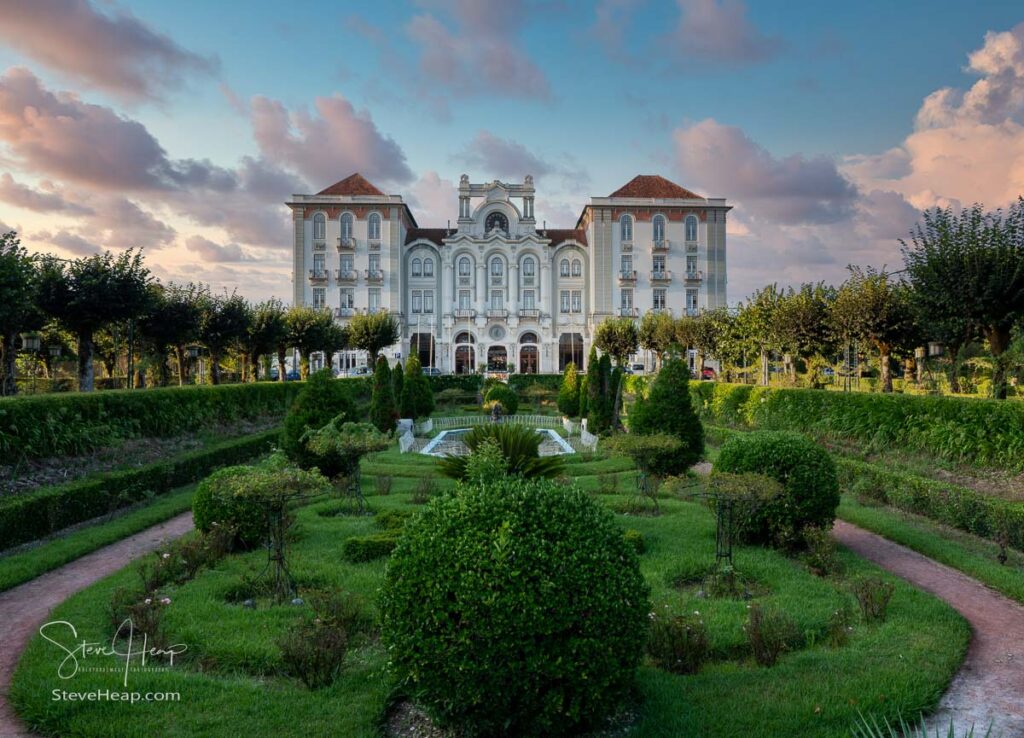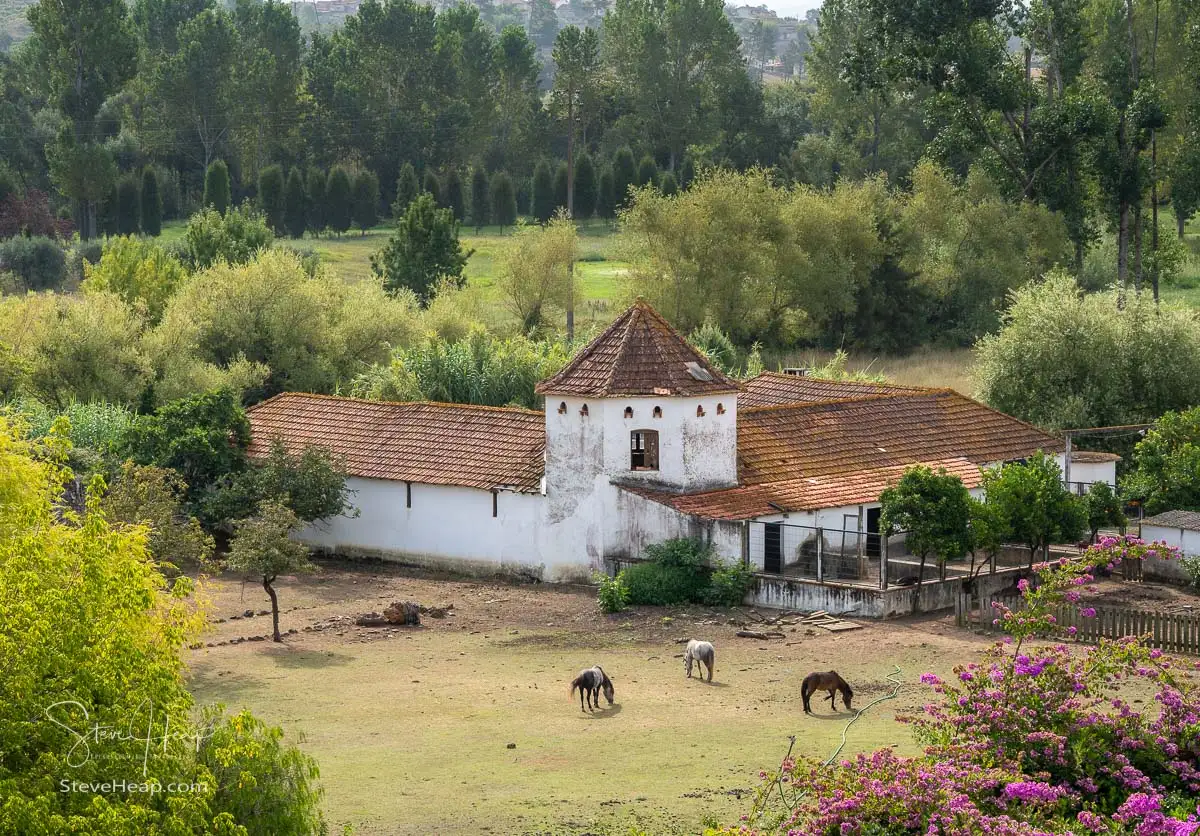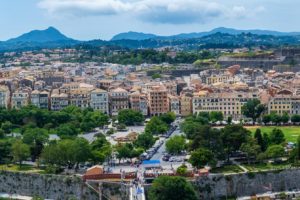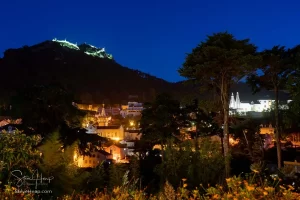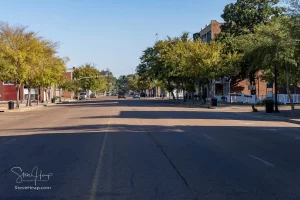Continuing the story of the Viking Cruises River of Gold cruise on the Douro River in Portugal, we rented a car for a slow and leisurely drive back from Porto to Lisbon for the return flight home. The introductory article to this series starts with the exploration of Lisbon and the previous article of our arrival at the Curia Palace Hotel is here.
The second day at the Curia Palace Hotel started better than the evening before with a breakfast buffet that was pretty good, and the view from our bedroom window of the grounds with horse riding stables and the 1930s swimming pool made a great start to the day.
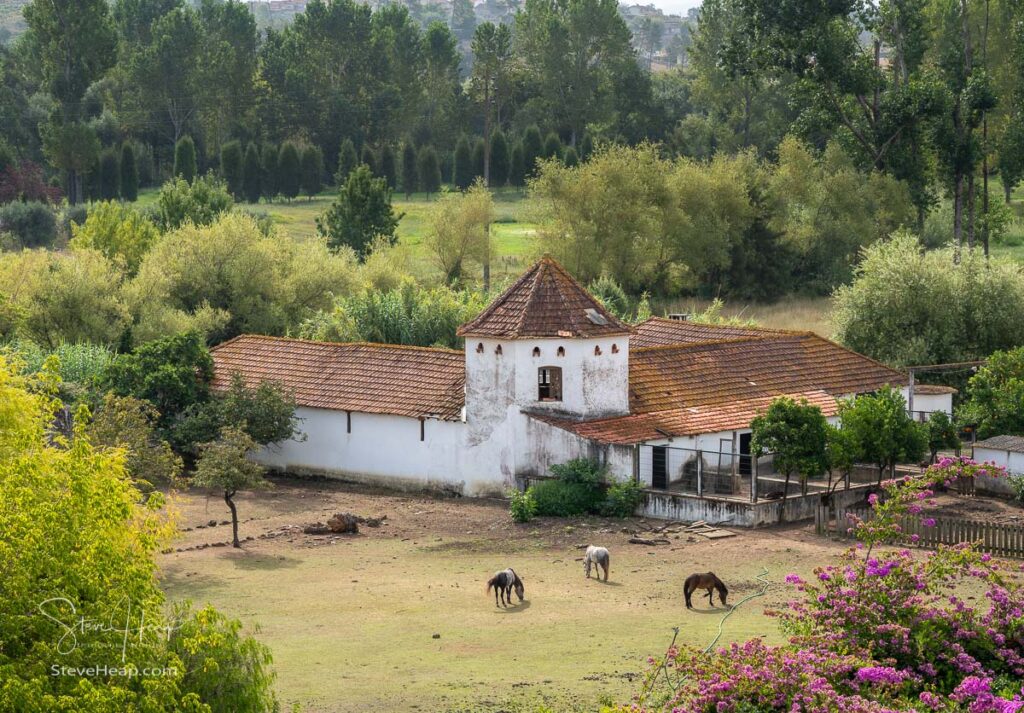
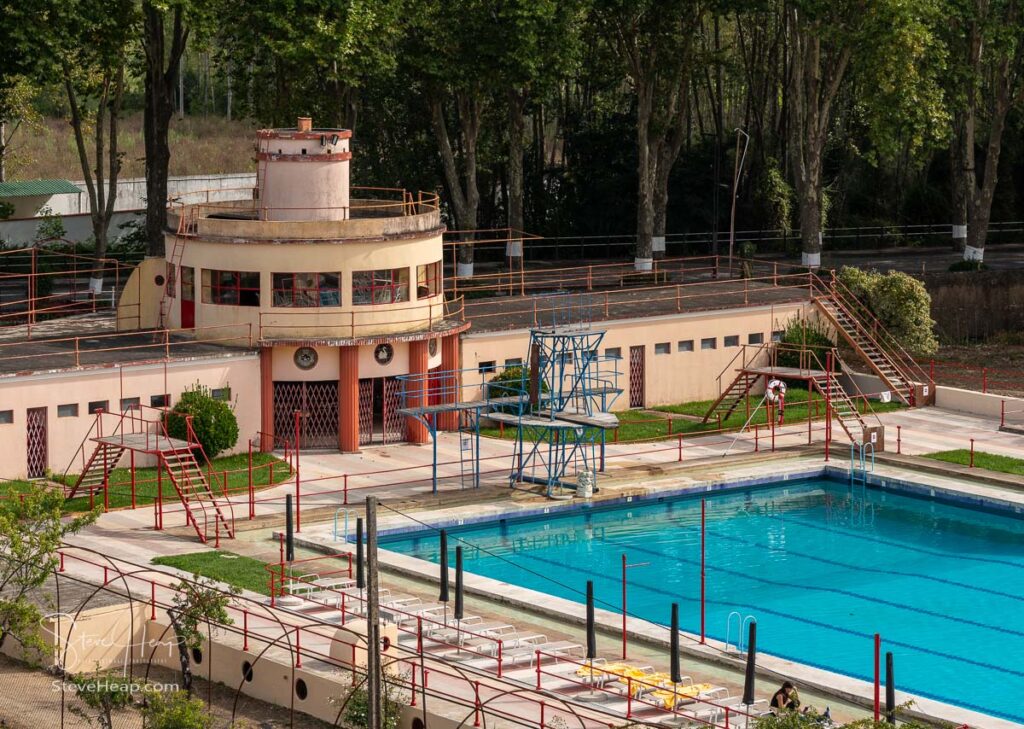
The plan for the day was a drive to the Venice of Portugal at Aveiro and then on to Viseu before returning to the hotel for our final night’s stay.
Aveiro was interesting! It had been an important port in the1500s exporting salt, metals and tiles but a great storm in the winter of 1575 closed the entrance to the port and created a new sandbar and reef in the Atlantic Ocean. The town struggled for some time, until some artificial canals were built in 1808 which allowed the town to grow and expand. Those canals are still there and are the basis of the tourist industry with “gondolas” taking tourists around and some magnificent Art Nouveau and Romanesque architecture to add to the magic.
We found underground parking without much difficulty and started our stroll around the town.
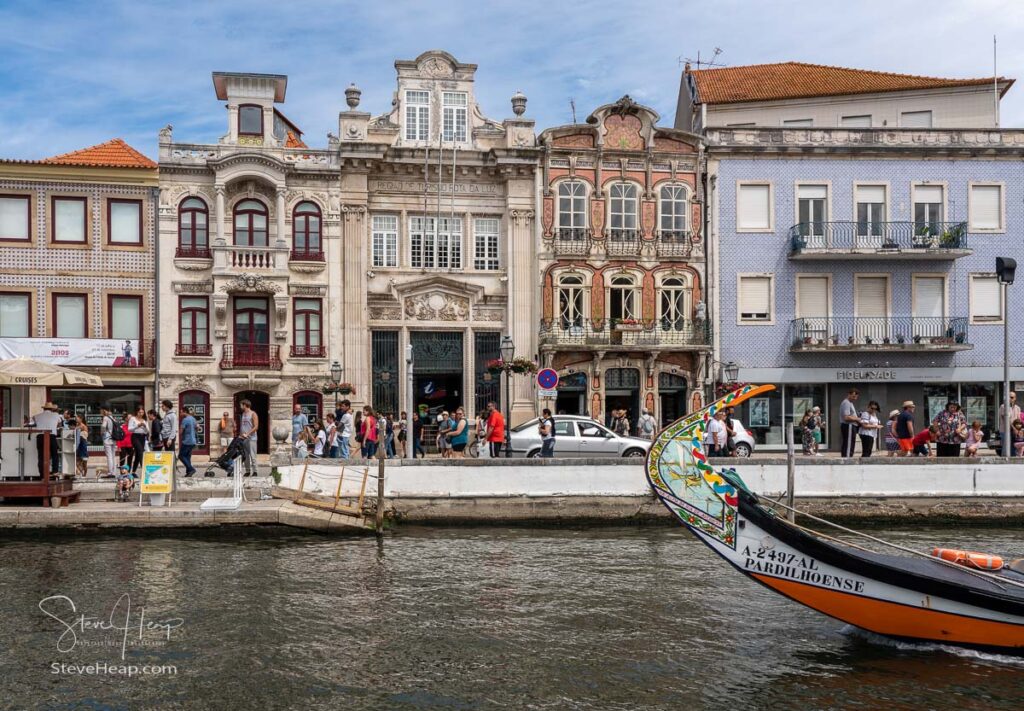
Each of the boats has a design on the prow where they tried to outdo each other in terms of the “smuttiness” of the painting! Very much like the postcards that you used to find in English seaside towns. Here are a couple of examples!
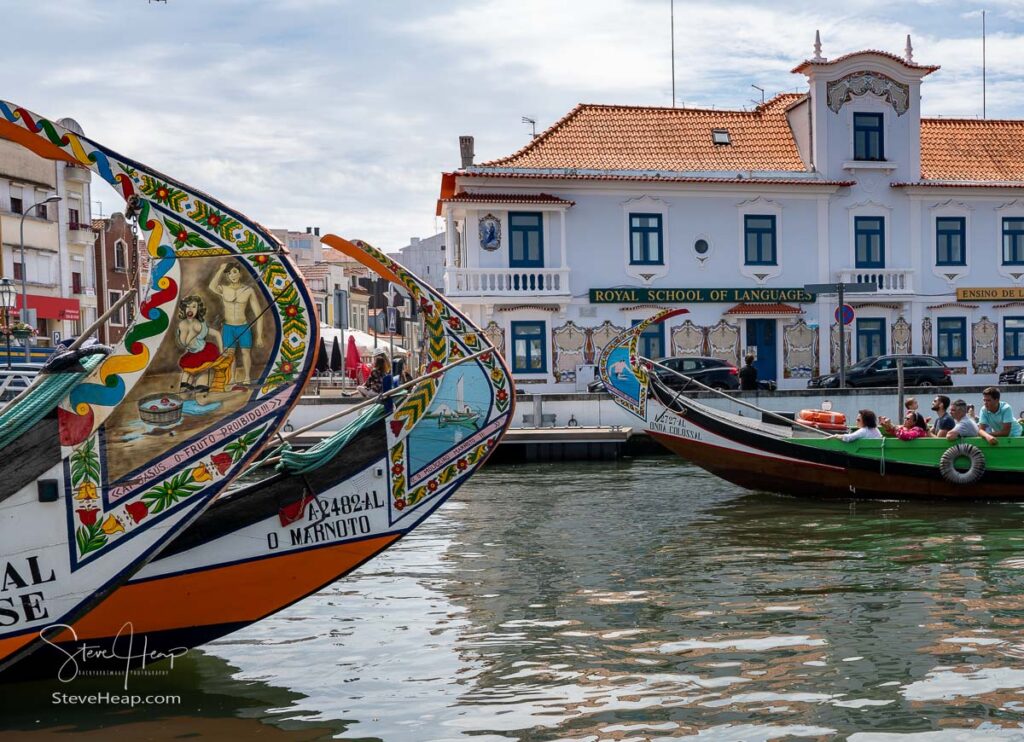
The buildings are pretty spectacular though. This particular one houses the Museum of Art Nouveau.
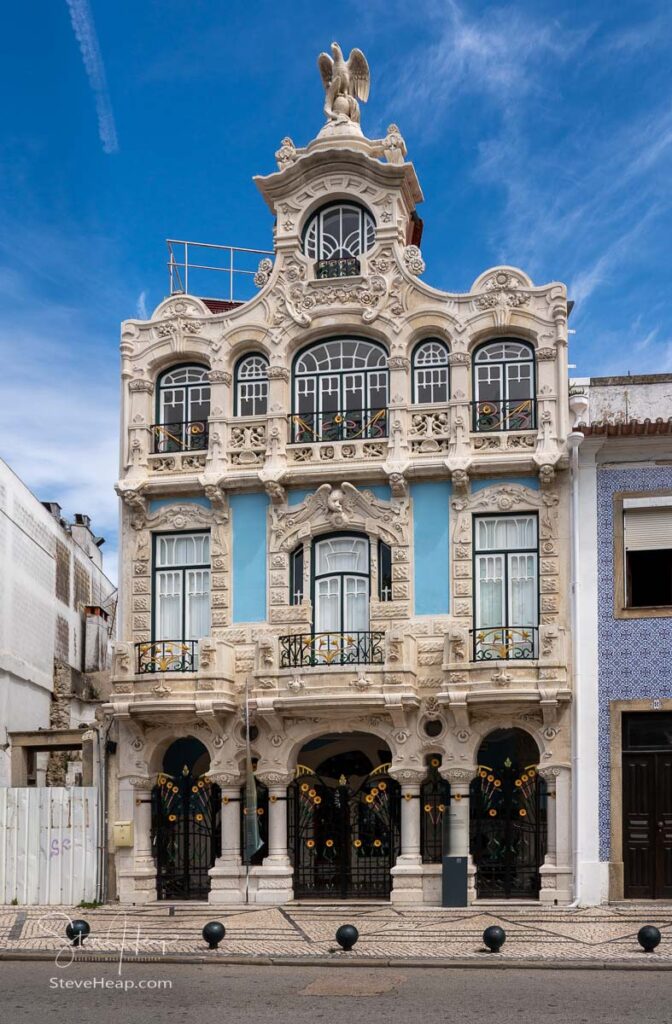
Architecture of all types can be found in the small streets and squares – this one is the chapel of Sao Goncalinho, the patron saint of Aveiro in Portugal. The church is based on a unique design of two hexagons, one for the main temple and a smaller one for the sacristy. Around the side is this impressive azulejo tile mural telling the story of the patron saint.
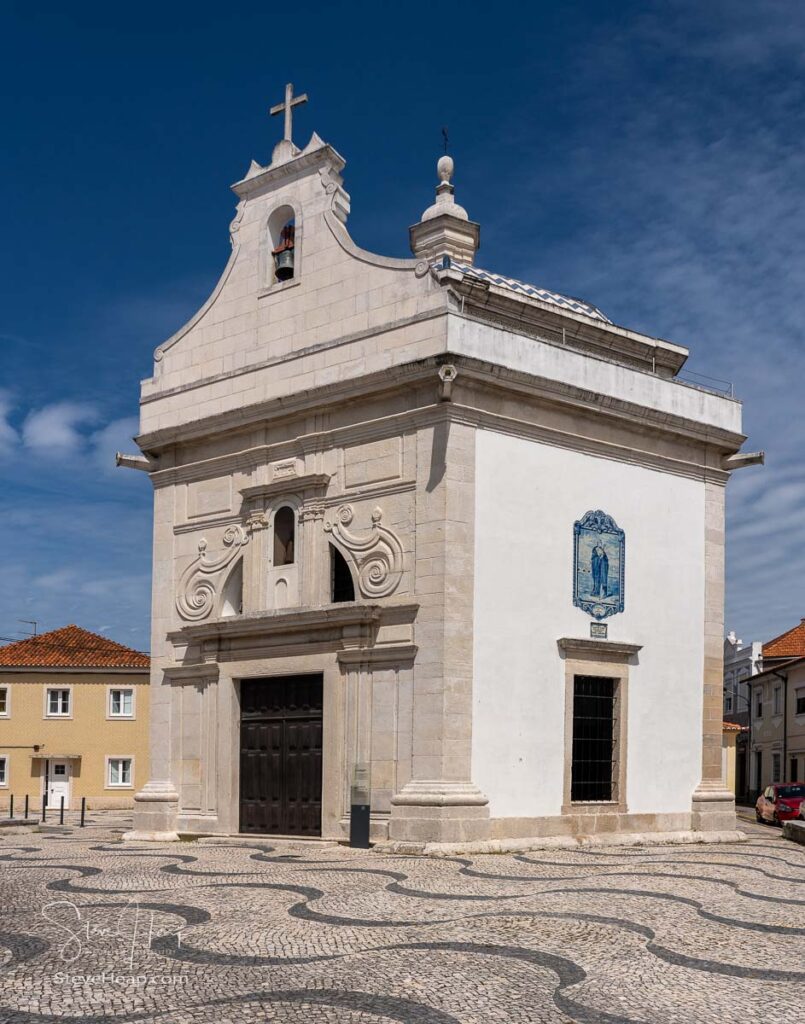
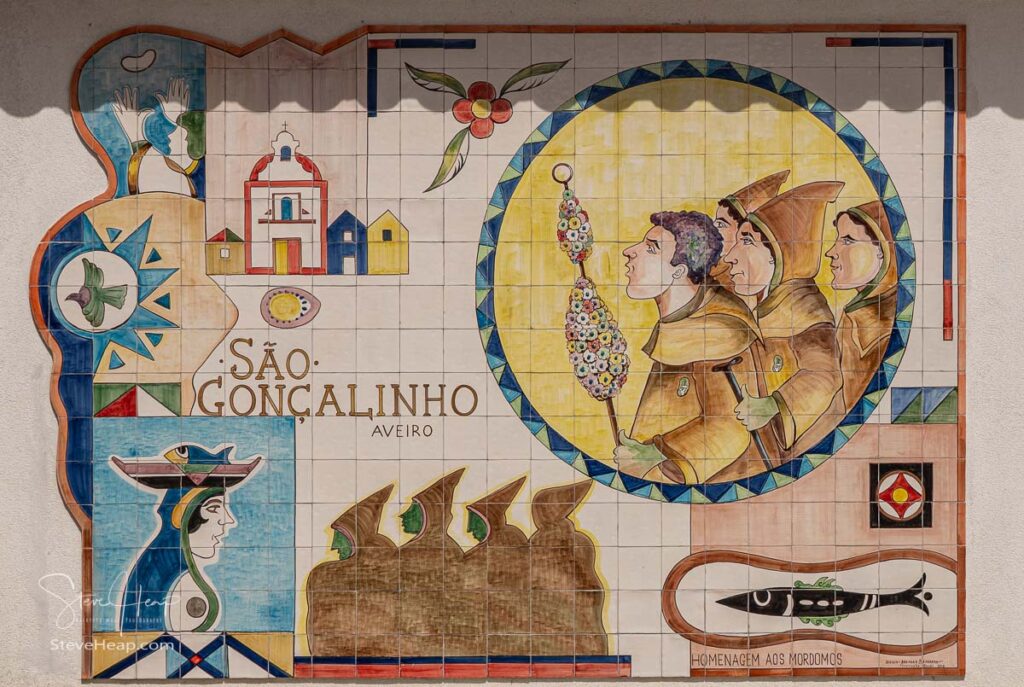
Old churches abound and I’m always intrigued by the varying amounts of decoration and gold ornamentation, this one from the Misericordia Church:
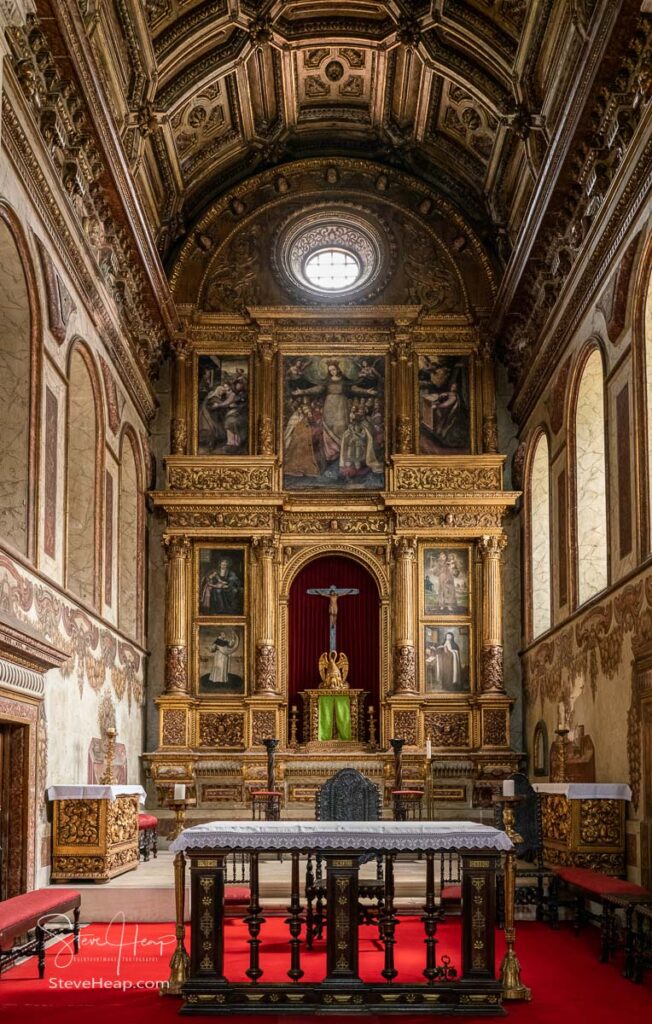
The exterior of this church had some very old Azulejo tiles as decorations and so I took a close-up of a section. Interesting as an abstract print perhaps, but it would make a great, and tricky, jigsaw puzzle!
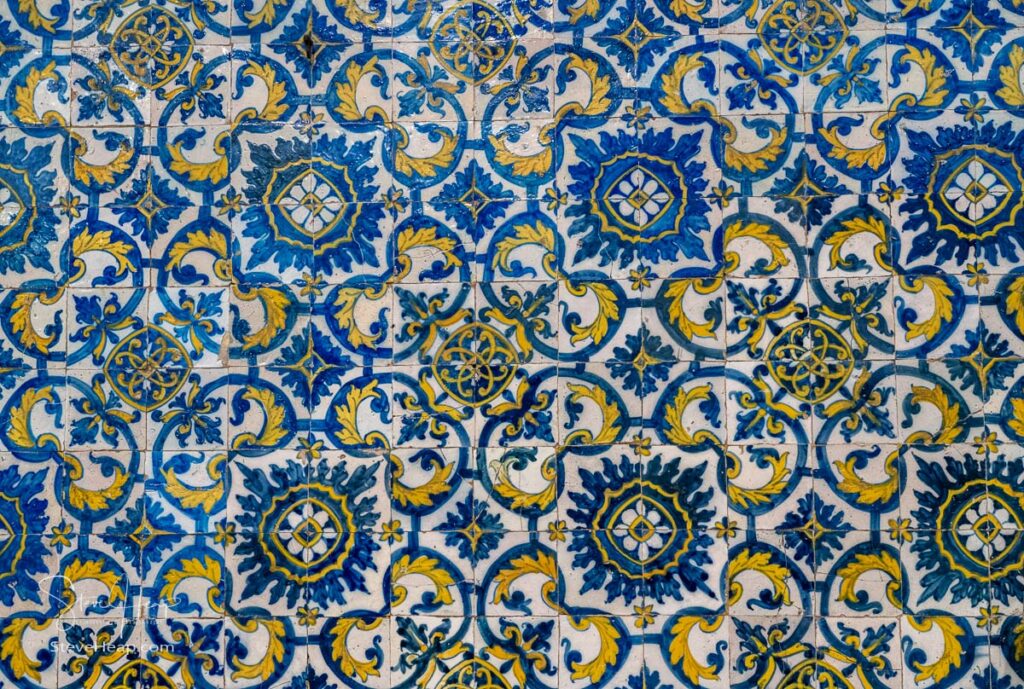
This statue of Mary is from the Presentation of Vera Cruz church:
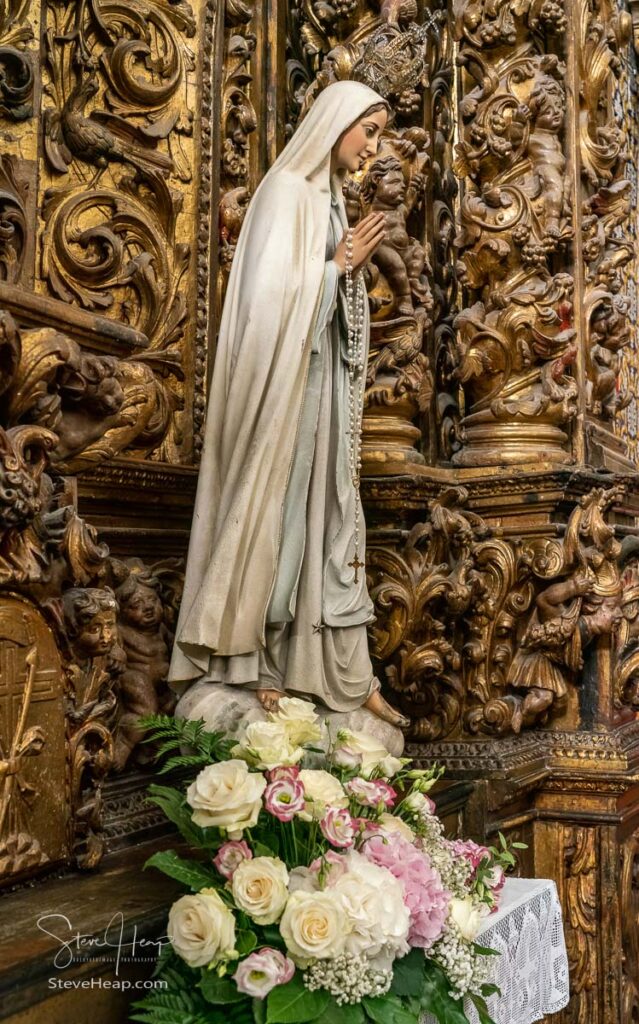
Then it was back to the car after a quick lunch in the town to make our way to Viseu. Another very old city in Portugal, this one dating back to the pre-Roman days although it rose to prominence with the Romans, being on the intersection of three of their major roads. Here our parking was more difficult, and we found a place in the lower areas of the city and started the walk towards where we thought the old town was. Asking a few passers-by was not very successful either as we seemed to be in the more commercial area of the city, but eventually we made our way up more hilly streets to the oldest part of town and then looked down at the tramway that comes from close by our car all the way up the hill to the old town!
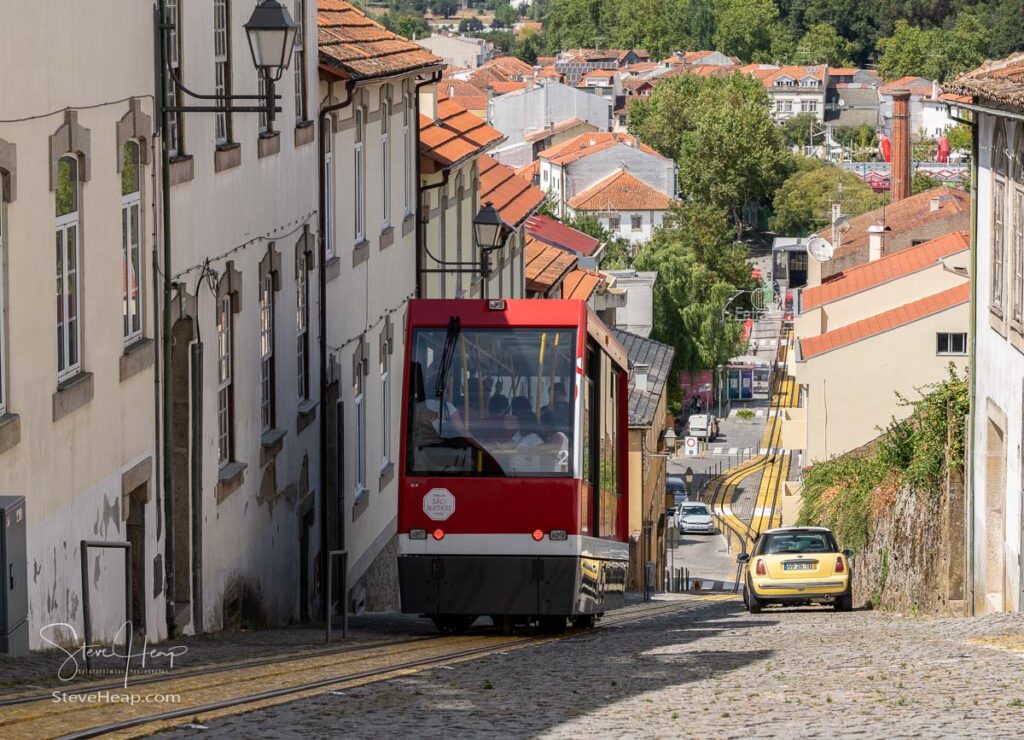
The old town square was everything we expected:
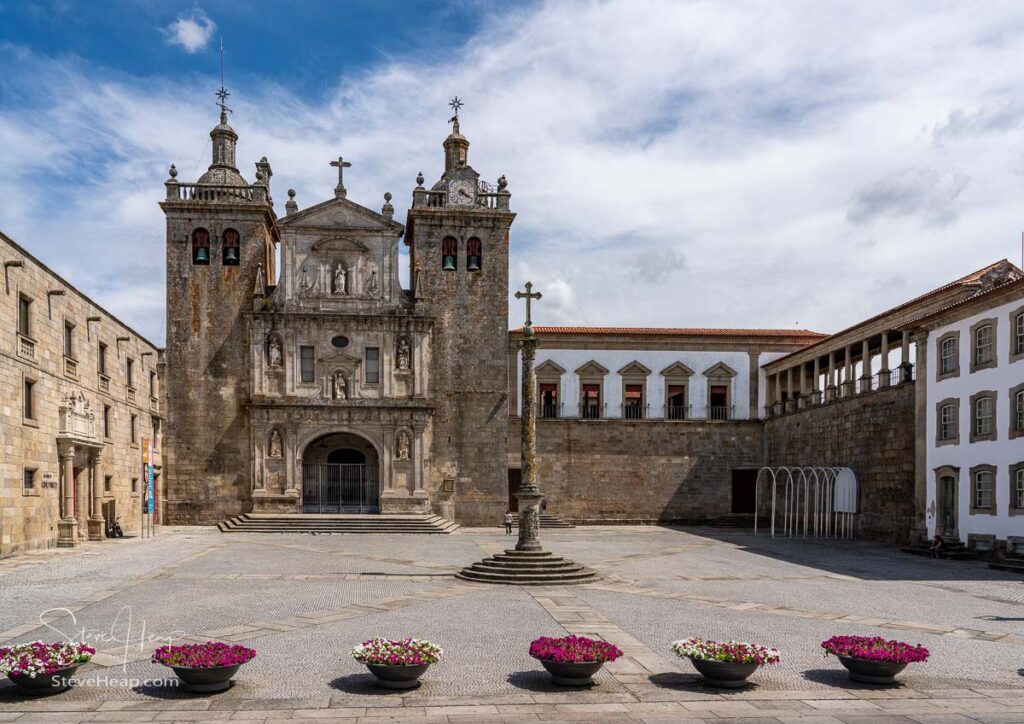
And, of course, we had to visit that old cathedral!
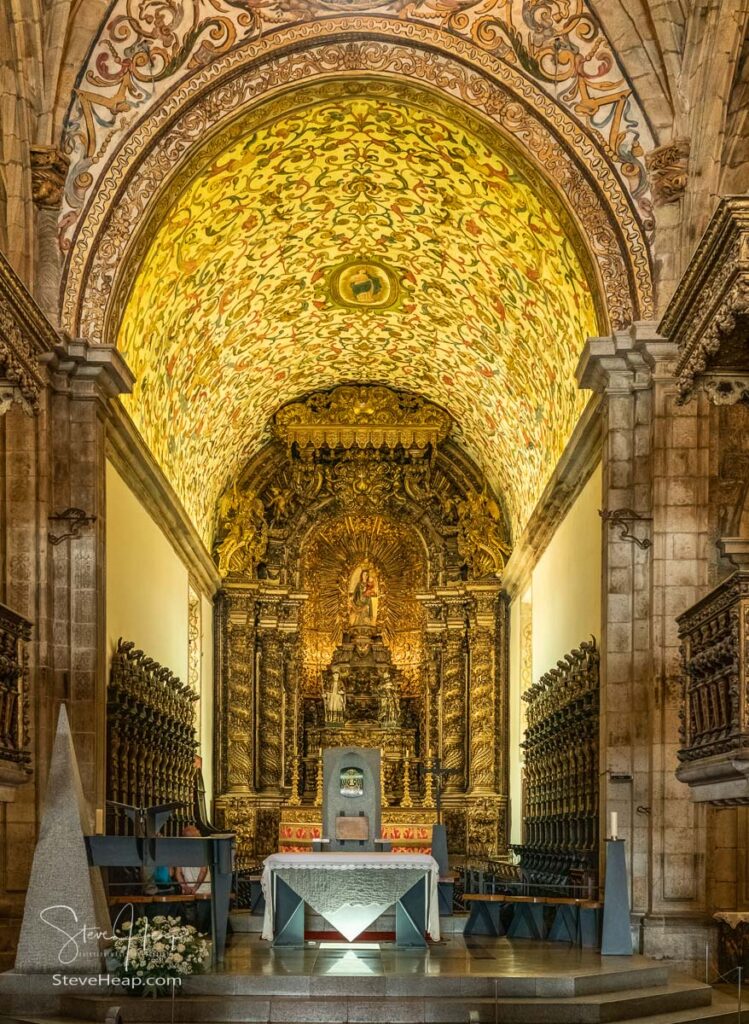
I do find it fascinating to see the different ways that churches in Portugal are decorated. This next photo shows the complexity of the carving on the choir stalls lining the church:
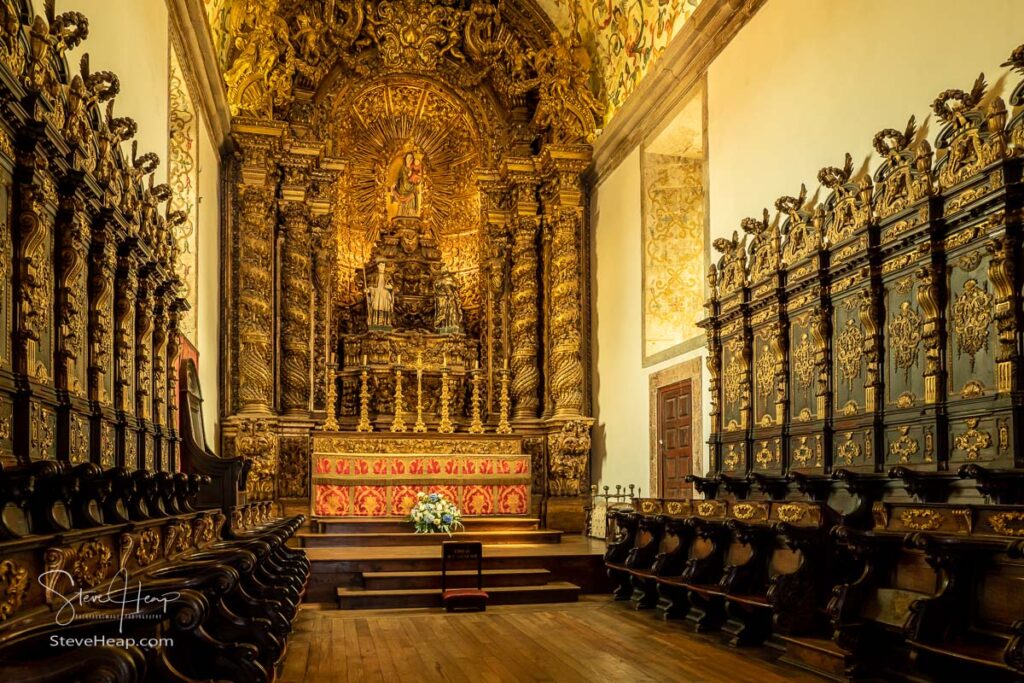
Down in the catacombs below the church, we came across this 15th Century carving of Jesus:
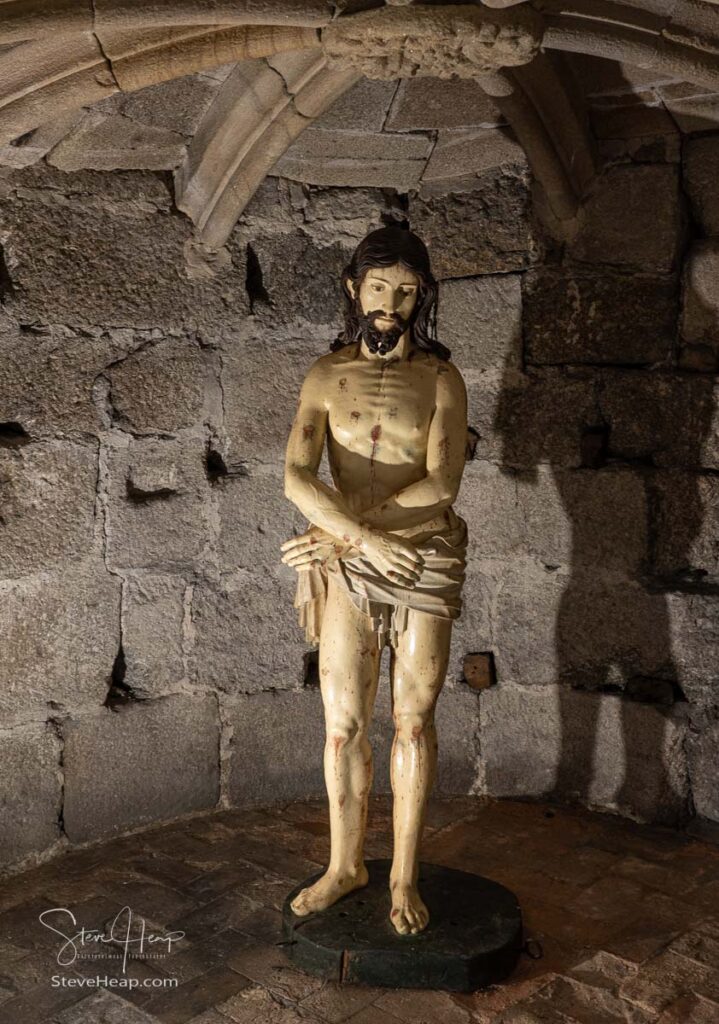
We could also climb higher in the church to get this wider view of the cathedral:
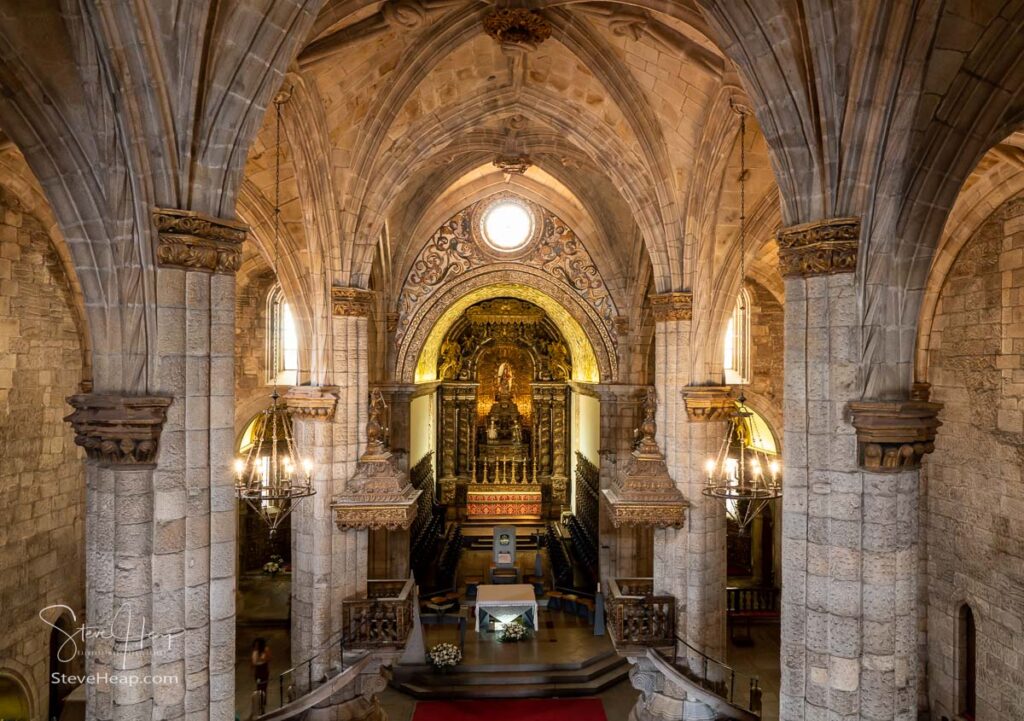
Across the square from the Cathedral was yet another church – the Misericordia church:
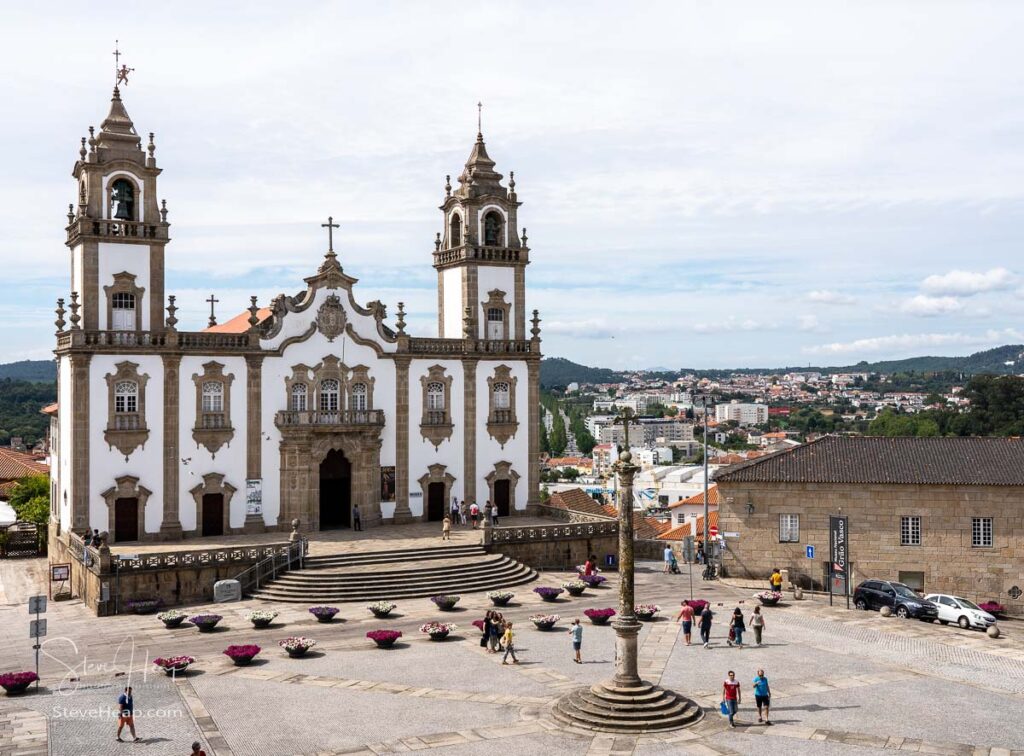
And that had a simpler style internally:
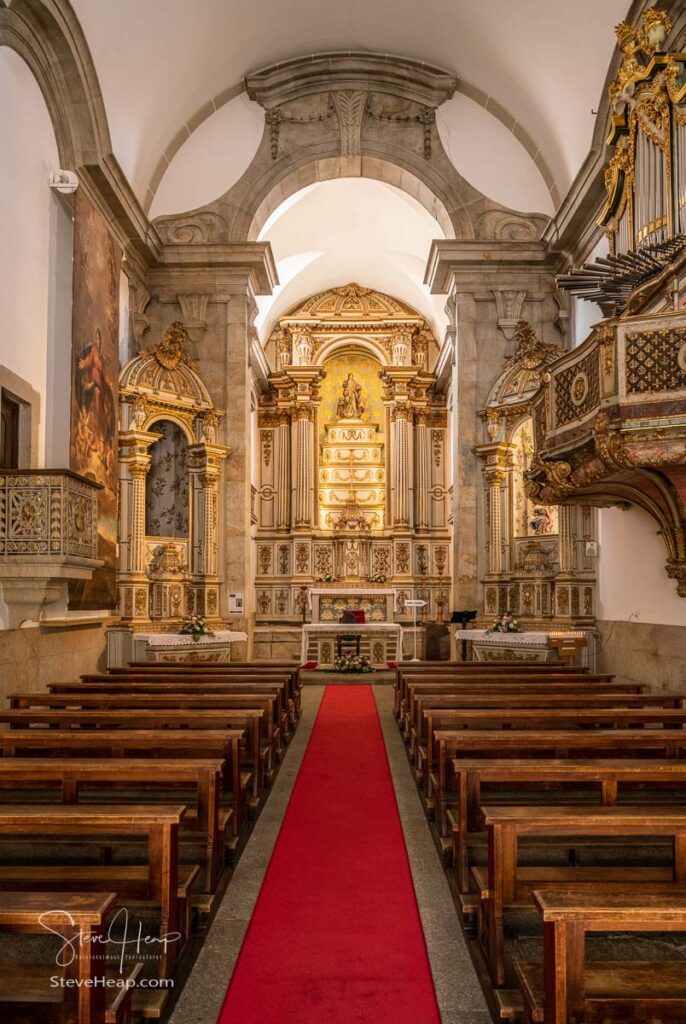
Walking a little further into the town and away from the main square, I spotted this rather overgrown courtyard of an old house with a delightful little cat hiding among the weeds:
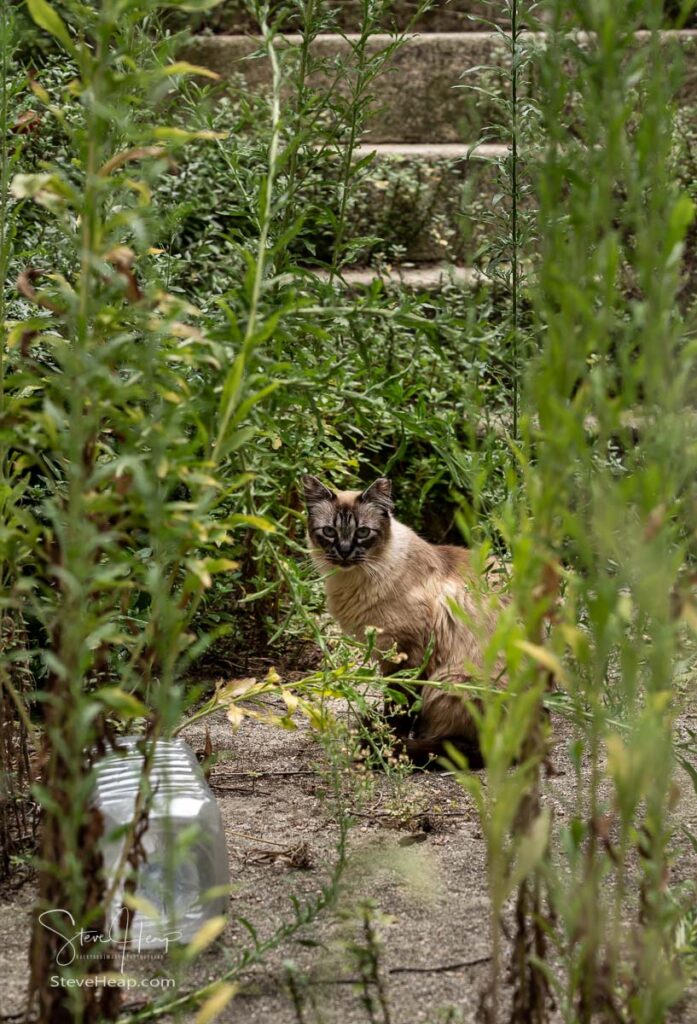
Finally, further down that street was yet another old, but smaller church built in 1742. The Capela de Nossa Senhora dos Remedios in Viseu, Portugal, also known as Our Lady of Remedies, has a “simple” painted altar, but the ceiling is also decorated with paintings:
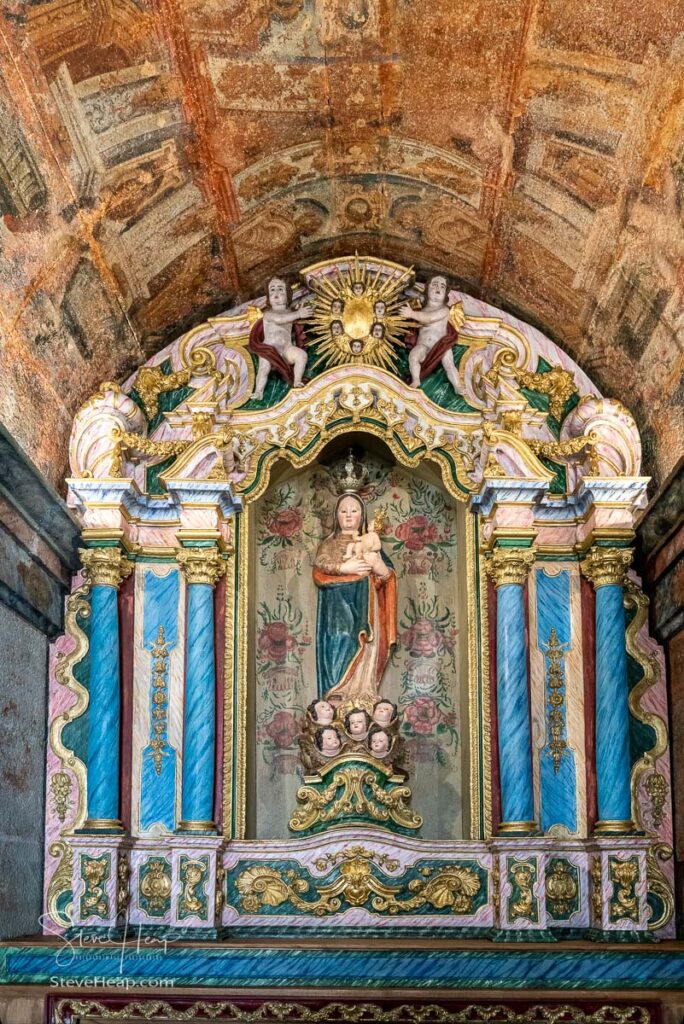
And with that, it was time to take that funicular tram back to our car park and make our way back to the hotel – stopping off in Coimbra for a few more photos from the bridge over the river!
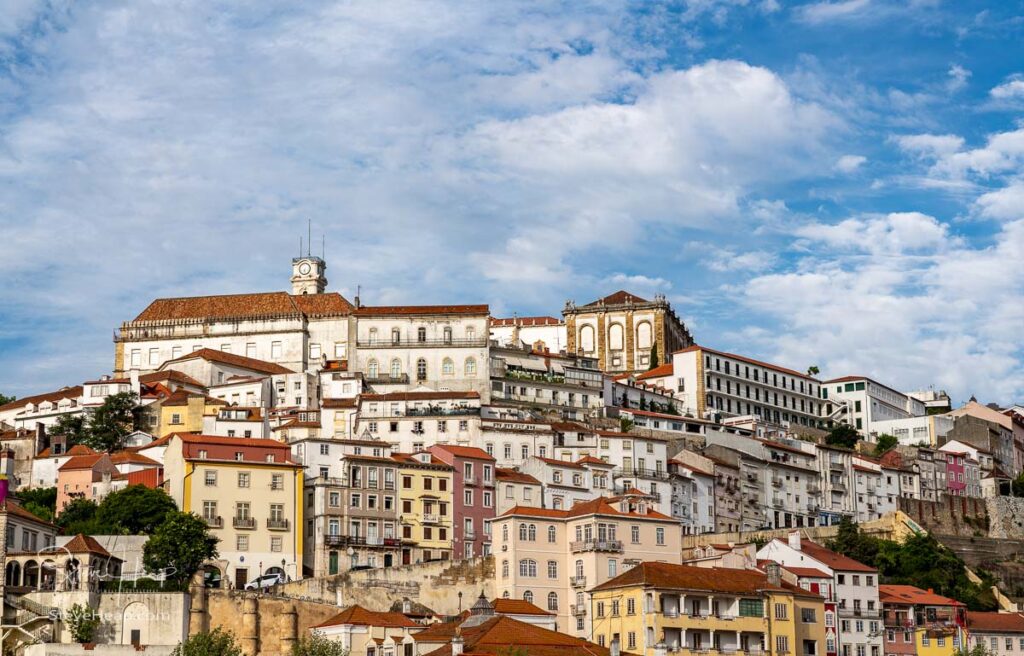
We did manage to get dinner in the Curia Palace hotel that evening. Not great, but it did allow us to relax after yet another busy day, with a move to the next hotel via Batalha and Nazare planned for tomorrow.
